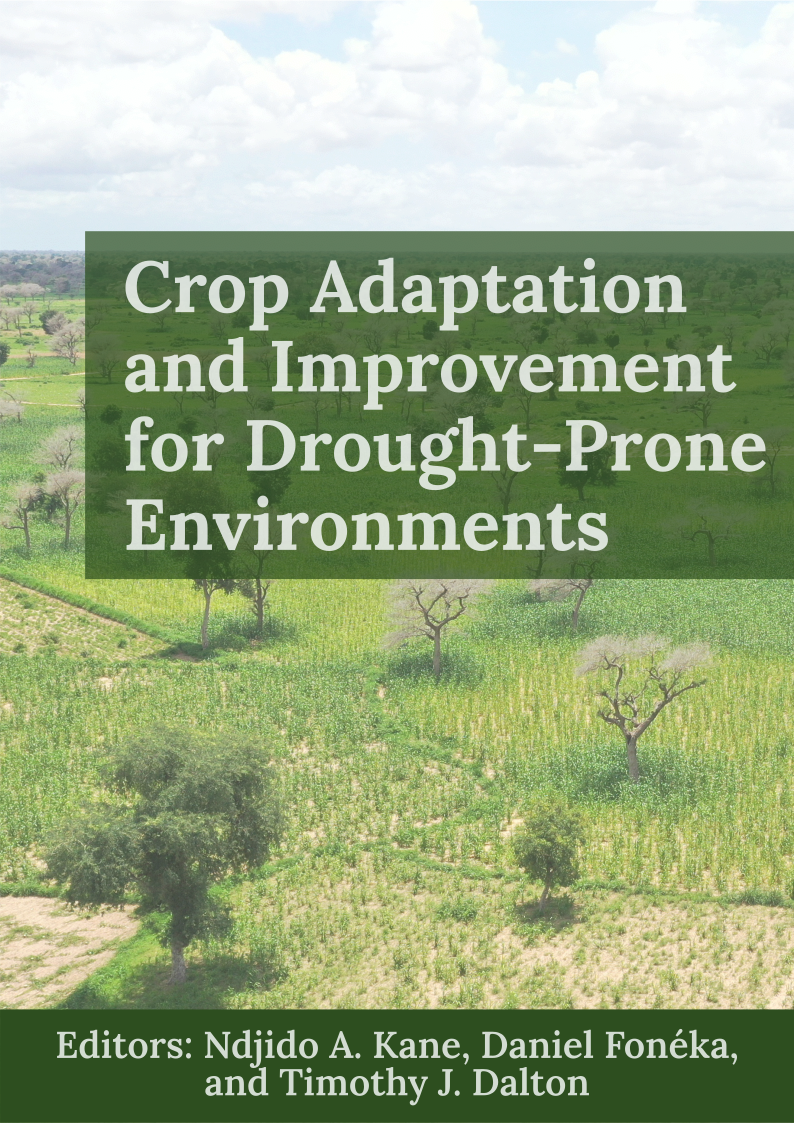Book Title: Crop Adaptation and Improvement for Drought-Prone Environments
Edited by Ndjido A. Kane; Daniel Foncéka; and Timothy J. Dalton

Contents
Book Information
Book Description
This book focuses on three important elements in the development of cereal and legume crops in semi-arid West Africa. The first section illustrates the socioeconomic factors that affect the food system for these crops and contains an overview of crop production and consumption in the region. Then, important inputs that affect system productivity are presented: preferences for new seed varieties, yield response to fertilizer, counterfeit herbicides, climate information, and the way farmers develop expectations about the weather events that shape cropping outcomes. The final chapter of section one is dedicated to understanding urban consumer preferences for processed food products derived from pearl millet.
The second section addresses the state of the art of phenotyping and the modeling of crop adaptation to dryland farming systems. Chapters in section two focus on the regional network for phenotyping, high throughput phenotyping in field situations, root architectures, and crop ideotypes. In addition, empirical evidence is presented on root and soil interactions and the effectiveness of unmanned aerial vehicles (UAVs to assess sorghum physiology.
Finally, the third section investigates the genetic diversity and improvement of dryland crops. Chapters in this section focus on biodiversity and agricultural system sustainability, orphan crops such as fonio, and the utilization of a regional germplasm collection in the improvement of cowpea, groundnut, pearl millet, and sorghum.
Book Source
This book is a cloned version of Crop Adaptation and Improvement for Drought-Prone Environments by Editors: Ndjido A. Kane, Daniel Foncéka, and Timothy J. Dalton, published using Pressbooks by New Prairie Press under a CC BY-SA (Attribution ShareAlike) license. It may differ from the original.
License
Crop Adaptation and Improvement for Drought-Prone Environments Copyright © 2022 by Editors: Ndjido A. Kane, Daniel Foncéka, and Timothy J. Dalton is licensed under a Creative Commons Attribution-ShareAlike 4.0 International License, except where otherwise noted.
Subject
The Arts


